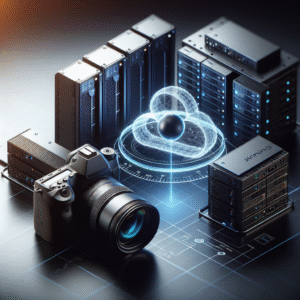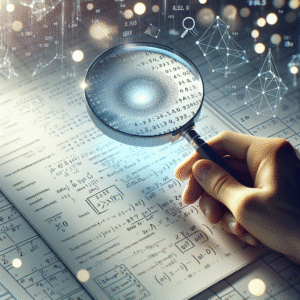Have you ever wondered how machine learning is transforming industries? It’s fascinating to think about how algorithms and data can change the way businesses operate. As I dive into the various fields affected by machine learning, I can’t help but marvel at its potential.
Understanding Machine Learning
At its core, machine learning is a subset of artificial intelligence (AI) that involves the use of algorithms to allow computers to learn from data. The beauty of ML lies in its ability to improve over time as more data becomes available. This capability is reshaping industries in ways that I never would have imagined a decade ago.
What Makes Machine Learning Different?
Machine learning differs from traditional programming in that it doesn’t rely on explicit instructions to perform tasks. Instead, it learns from patterns in data. This means that the more data I feed an ML model, the more accurate its predictions become. It’s like training a puppy: the more I teach it, the better it performs.
Types of Machine Learning
There are three primary types of machine learning: supervised learning, unsupervised learning, and reinforcement learning. Understanding these types helps me grasp how ML operates in different contexts.
-
Supervised Learning: This involves training a model on labeled data, which means I provide the algorithm with input-output pairs. The model learns to map inputs to outputs based on this data. For example, I might train a model to recognize images of cats and dogs by providing it with a dataset containing labeled pictures.
-
Unsupervised Learning: In this type, I deal with unlabelled data. The model tries to identify patterns or groupings within the data. This can be particularly useful for customer segmentation, where I might want to understand different groups of customers based on their behavior.
-
Reinforcement Learning: Here, the model learns through trial and error. I define a system of rewards and penalties to guide the learning process. It’s akin to teaching a child to ride a bike, where they learn balance through practice and feedback.
Machine Learning in Healthcare
One of the most impactful areas for machine learning is undoubtedly healthcare. I find it incredible how ML is enhancing diagnosis, treatment planning, and patient care.
Predictive Analytics
Machine learning algorithms can analyze vast datasets to predict disease outbreaks or identify patients at high risk for certain conditions. For instance, I can look at how hospitals use ML to predict patient deterioration, allowing them to intervene earlier.
Image Analysis
In radiology, ML algorithms assist in interpreting medical images, such as MRIs and X-rays. They detect anomalies far quicker than human radiologists. This not only speeds up diagnosis but also increases the likelihood of catching issues early, thereby improving patient outcomes.
Personalized Medicine
Machine learning is paving the way for tailored treatment plans that consider individual patient characteristics. When I think about precision medicine, I see how ML can analyze genetic profiles to suggest the most effective therapies based on a person’s unique biology.
Healthcare Efficiency
By automating administrative tasks, like scheduling and billing, machine learning systems can significantly reduce costs and improve efficiency in healthcare settings. This allows medical professionals to dedicate more of their time and resources to patient care.
Machine Learning in Finance
The finance industry has also undergone significant changes due to machine learning. I find it fascinating how financial institutions are leveraging ML for various applications.
Fraud Detection
Machine learning models can analyze transaction patterns to identify fraudulent activities in real time. I appreciate how these systems adapt and learn from new types of fraud, making them increasingly effective at safeguarding financial transactions.
Algorithmic Trading
In trading, ML algorithms can analyze market data and execute trades at lightning speed. I’ve read about hedge funds and trading firms utilizing these technologies to gain a competitive edge. The amount of data processed in milliseconds is mind-blowing.
Credit Scoring
Machine learning has transformed the credit scoring process by allowing lenders to evaluate risks more accurately. Traditional credit scoring methods may miss pertinent information, while ML models can analyze a broader range of factors. This can lead to better lending decisions and enhanced financial inclusivity.
Machine Learning in Retail
The retail sector is another domain where machine learning is making a substantial impact. I find it remarkable how retailers are using ML to enhance customer experiences and optimize their operations.
Customer Recommendations
Retailers use ML algorithms to analyze shopping behavior and provide personalized product recommendations. I’ve noticed how Amazon knows my preferences remarkably well, suggesting items that are often spot on. This tailored shopping experience can significantly increase sales and customer satisfaction.
Inventory Management
Machine learning helps retailers manage inventory levels more effectively by predicting demand. When I think about the complexities of supply chains, it’s clear how ML can minimize excess stock and reduce shortages, leading to cost savings and improved efficiency.
Dynamic Pricing
Retailers employ ML algorithms to set dynamic prices based on factors like demand, competitor pricing, and market trends. This pricing strategy helps maximize profits while remaining competitive. I can easily see how this is especially relevant during holiday seasons or special promotions.
Machine Learning in Manufacturing
The manufacturing industry is undergoing a revolution thanks to machine learning. I find it exciting to see how ML is streamlining processes and enhancing productivity.
Predictive Maintenance
I’ve learned that machine learning models can predict equipment failures before they happen. This predictive maintenance reduces downtime and saves manufacturers significant costs. By analyzing sensor data, ML helps in identifying potential issues, allowing teams to act proactively.
Quality Control
Machine learning can improve quality control by analyzing product defects and optimizing production lines. I can imagine how this technology analyzes images on assembly lines to identify flawed products in real-time, ensuring only the best products reach consumers.
Supply Chain Optimization
ML algorithms help manufacturers optimize their supply chain operations by forecasting demand and streamlining logistics. The ability to analyze vast amounts of data in real time allows for more informed decision-making and faster response times.
Machine Learning in Transportation
The impact of machine learning on transportation is profound, especially with the rise of autonomous vehicles and smart transportation systems.
Autonomous Vehicles
Self-driving cars are perhaps the most publicized application of machine learning in transportation. I’ve read that the algorithms used in these vehicles analyze vast amounts of data from sensors and cameras to navigate safely and efficiently.
Traffic Management
Machine learning optimizes traffic flow in urban areas by analyzing real-time data from various sources, including traffic cameras and sensors. This data-driven approach can reduce congestion and improve public safety. I can picture smart traffic signals adjusting in real time to optimize traffic flow, thanks to ML algorithms.
Logistics Optimization
Transportation companies leverage ML for optimizing delivery routes, leading to reduced fuel consumption and improved delivery times. I appreciate how these innovations make the entire logistics process more efficient, ultimately benefiting consumers.
Machine Learning in Agriculture
Agriculture is experiencing a transformation thanks to machine learning. I’m excited to see how this technology is helping farmers increase yields and reduce costs.
Precision Farming
By analyzing data from various sources, including satellites and sensors, machine learning enables precision farming techniques. I can understand how farmers can optimize irrigation, planting schedules, and fertilizer usage, ensuring resources are used effectively.
Crop Disease Detection
ML algorithms can analyze images of crops to detect diseases early, allowing farmers to take timely action. I find it remarkable that these systems can help safeguard food production and contribute to food security.
Yield Prediction
Using historical data and advanced modeling techniques, machine learning can predict crop yields, helping farmers make informed decisions. I think about how vital these predictions are for planning and resource allocation, making farming more efficient and profitable.
Machine Learning in Entertainment
The entertainment industry is also embracing machine learning to enhance content creation and improve viewer experiences. I can see how this technology is shaping the future of entertainment in various ways.
Content Recommendations
Streaming platforms use ML algorithms to suggest movies and TV shows based on user preferences. I’ve found myself enjoying recommendations that align with my viewing history, leading to a more personalized experience.
Script Analysis
In content creation, machine learning can analyze scripts to predict their success by understanding audience preferences. I’m fascinated by how studios can make data-driven decisions about which projects to greenlight, potentially leading to better outcomes at the box office.
Audience Engagement
ML tools can analyze social media trends and audience feedback, allowing entertainment companies to tailor their marketing efforts effectively. This ensures that campaigns resonate with the target audience, maximizing reach and impact.
Challenges of Machine Learning Implementation
While the impact of machine learning on industries is substantial, there are also challenges to consider. I recognize the importance of addressing these obstacles to fully harness the potential of ML.
Data Privacy and Security
As machine learning relies heavily on data, privacy concerns have become a pressing issue. I understand that ensuring data security and compliance with regulations is vital for businesses employing ML technologies.
Algorithm Bias
Machine learning algorithms can inadvertently perpetuate biases present in the training data. I’m aware that it’s crucial for organizations to address and mitigate these biases to ensure fair outcomes in applications like hiring and lending.
Workforce Transition
The rise of machine learning can lead to job displacement, as automation takes over certain tasks. I recognize the importance of reskilling and upskilling efforts to help the workforce transition to new roles that utilize technology rather than fearing it.
Dependence on Quality Data
The effectiveness of machine learning models hinges on the quality of the data used for training. I find it critical for organizations to invest in data collection and curation processes to ensure they produce accurate results.
The Future of Machine Learning Across Industries
Looking ahead, I feel optimistic about the continued advancement of machine learning across various sectors. The potential for innovation and efficiency remains vast, and I can only imagine the possibilities.
Enhanced Collaboration
As industries adopt machine learning, I anticipate more collaboration between sectors. For instance, data-sharing agreements between healthcare and tech companies could lead to groundbreaking advancements in personalized medicine.
Sustainable Practices
I hope to see machine learning also contributing to sustainable practices. By optimizing resource usage and reducing waste, ML can play a transformative role in addressing environmental challenges.
Continuous Learning
I believe that the future will involve even more advanced learning algorithms capable of real-time learning from new data. This continuous learning will make ML applications even more effective and responsive.
Broadening Accessibility
As machine learning becomes more accessible to smaller businesses and startups, I expect to see a democratization of technology. This can lead to increased competition and diverse innovations, benefiting consumers and industries alike.
Conclusion
Machine learning is undoubtedly having a profound impact on industries, reshaping how we approach problems and solutions. From healthcare to finance, retail to agriculture, the applications are vast and encouraging. I feel enthusiastic about the future as these advances promise to improve efficiency, enhance personalization, and address critical challenges.
As I reflect on this journey through the world of machine learning, I’m excited to see how we can harness its potential while navigating the challenges it presents. Understanding and embracing this technology is essential for all of us as we strive to create a smarter, more efficient world.






